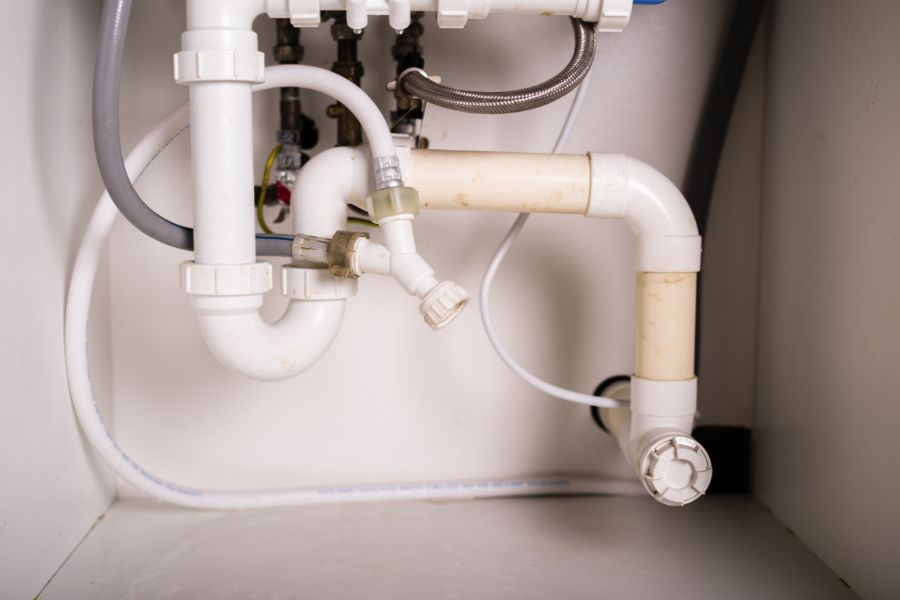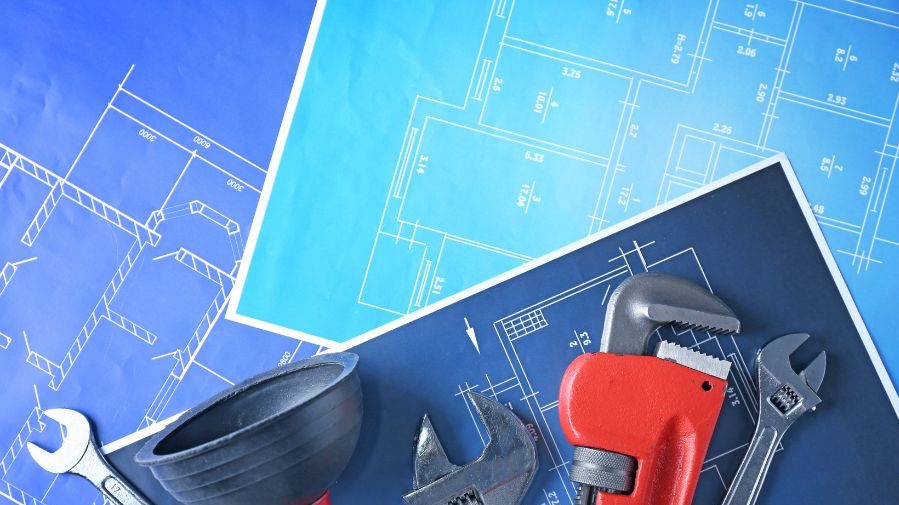Green plumbing is an initiative aimed at minimizing water usage, reducing energy consumption, and promoting the use of sustainable materials. These eco-friendly practices not only help in conserving natural resources but also cut down on your utility bills. This article outlines the steps towards implementing green plumbing to minimize your environmental footprint.
Finding the Best Plumber in Northern Virginia: A Step-by-Step Guide
Water conservation is the cornerstone of green plumbing. To achieve this:
- Install low-flow showerheads and faucets: These use less water per minute than traditional fixtures, saving thousands of liters per year.
- Use dual-flush toilets: These allow you to choose between two flush strengths, using less water for liquid waste.
- Consider tankless water heaters: They only heat water when it’s needed, saving energy and reducing utility costs.
Choosing the Right Northern Virginia Plumber
Enhancing energy efficiency is another critical aspect of green plumbing:
- Use solar-powered water heaters: They use renewable energy sources and reduce reliance on fossil fuel-based energy.
- Insulate your hot water pipes: This minimizes heat loss as water travels from your heater to your faucet or showerhead.
- Install a hot water recirculation system: This system uses a pump to push hot water to fixtures and pull back unused hot water back into the heater.
Step 3: Implementing Plumbing in Northern Virginia with Sustainable Materials
Using sustainable materials contributes significantly towards reducing your environmental footprint:
- Use PEX (cross-linked polyethylene) piping: PEX piping is more durable than traditional metal pipes and doesn’t corrode over time.
- Consider recycled materials for fixtures and fittings.
Regular Maintenance by Plumbing Companies in Northern Virginia
Regular maintenance ensures optimal functionality reducing wastage:
- Regularly check for leaks in pipes and faucets.
- Schedule professional inspections annually.
Plumbing Services in Northern Virginia: The Ultimate Solution for Efficient Wastewater Management
Effective wastewater management helps in conserving water:
- Incorporate greywater systems: These systems reuse water from showers, baths, and sinks for non-potable purposes like flushing toilets or irrigation.
- Install a rainwater harvesting system: This system collects rainwater for various household uses.
Implementing green plumbing is a step-by-step process that starts with understanding the importance of water and energy conservation. It requires deliberate choices in selecting fixtures, materials, and practices aimed at reducing your environmental footprint. The effort invested not only contributes to preserving the environment but also provides significant savings on utility bills over time.

Green plumbing, also referred to as Eco-friendly or sustainable plumbing, is a method of designing and installing plumbing systems to reduce water usage, recycle used water, and implement energy-efficient systems. This concept goes beyond the use of environmentally friendly materials; it considers the whole process of planning, implementing, and maintaining a plumbing system that has minimal impact on the environment.
Water Conservation Systems
One of the principal features of green plumbing is water conservation. This involves the installation of systems that use less water or recycle used water. Here’s how it works:
- Low-Flow Fixtures: These are designed to use less water than traditional fixtures. They include low-flow showerheads, faucets, and toilets.
- Greywater Systems: These collect used water from showers, baths, and sinks (also known as greywater), treat it and reuse it for non-potable purposes like irrigation or toilet flushing.
- Rainwater Harvesting Systems: These collect rainwater for various uses such as outdoor irrigation or indoor non-potable uses.
Energy-Efficient Plumbing
Energy efficiency is another crucial aspect of green plumbing. This involves using less energy in heating and transporting water through the following ways:
- Tankless Water Heaters: Unlike traditional heaters that store hot water, tankless heaters heat only needed amounts of water resulting in significant energy savings.
- Hot Water Recirculation Systems: These return unused hot water back into the heater thus reducing wastage.
Environmentally Friendly materials
In addition to conserving resources like water and energy, green plumbing also considers the type of materials used in constructing a house’s plumbing system:
- PEX Piping – Cross-linked polyethylene (PEX) piping is durable, flexible, and requires fewer fittings compared to copper or PVC pipes leading to fewer leaks.
- Lead-Free Fixtures – Green plumbing encourages the use of lead-free fixtures that have less impact on health and the environment.
Careful Planning and Installation
Proper planning and installation are vital in the success of a green plumbing system. This involves:
- Efficient Pipe Layouts: Designing a compact, direct pipe layout reduces the amount of materials used and energy consumed in transporting water.
- Professional Installation: Hiring a competent, green-certified plumber ensures that all systems are installed correctly and operate efficiently.
Green plumbing is an investment not only towards saving money but also towards conserving our environment. By understanding what constitutes green plumbing, homeowners can make informed decisions about their housing projects and contribute to a more sustainable future.
Green plumbing techniques are an investment into a more sustainable future. Not only do they contribute to environmental conservation, but they also result in significant monetary savings in the long run. Here are some investment-worthy green plumbing techniques that promote sustainable living.
Water Efficient Fixtures
Water-efficient fixtures like low-flow showerheads and dual-flush toilets significantly reduce water usage without compromising functionality.
- Low-flow Showerheads: These fixtures use less than 2.5 gallons of water per minute, compared to the usual 5 gallons, cutting your water consumption by half.
- Dual-flush Toilets: A dual-flush toilet offers two flush options—a full flush for solid waste and a partial flush for liquid waste—thus conserving water.
On-Demand Hot Water Circulation Pump
Traditional hot water systems continuously heat water, leading to substantial energy wastage. The on-demand hot water circulation pump only heats water when required, reducing energy consumption.
Greywater Systems
Greywater systems recycle used household water from showers, baths, and sinks for gardening or flushing toilets. This system significantly reduces freshwater usage.
Rainwater Harvesting
Rainwater harvesting collects and stores rainwater for later use. This technique can supplement your regular water supply, reduce dependence on municipal sources, and lower your overall water bills.
High-Efficiency Boilers
High-efficiency boilers consume less fuel than traditional boilers while providing the same level of heating. Making the switch can significantly decrease your carbon footprint and save you money on heating bills.
| Green Plumbing Technique | Environmental Benefits | Financial Savings |
| Water Efficient Fixtures | Reduced Water Usage | Lower Water Bills |
| On-Demand Hot Water Circulation | Reduced Energy Usage | Lower Energy Bills |
| Greywater Systems | Water Recycling | Lower Water Bills |
| Rainwater Harvesting | Supplementary Water Source | Reduced Dependence on Municipal Water |
| High-Efficiency Boilers | Reduced Fuel Consumption | Lower Heating Bills |
Investment in green plumbing techniques is a win-win situation. Not only do you contribute to the health of our planet, but you also make significant savings over time. The upfront costs might seem high, but the long-term benefits far outweigh these initial expenses.
Remember, every drop counts! Even small changes towards more sustainable plumbing infrastructure can have a significant impact. So start investing in green plumbing techniques and pave the way for sustainable living.

Renovating your existing plumbing infrastructure is not only a good way to increase the value of your home but also an opportunity to improve your water efficiency and save on utility bills. Here are some steps you can take to achieve a successful renovation.
Understanding the Plumbing System
Before undertaking any significant renovations, it’s crucial to understand how the entire system functions. The plumbing system comprises two subsystems: one brings freshwater in, and the other takes wastewater out. The water that comes into your home is under pressure, while wastewater relies on gravity.
Inspect Your Existing Plumbing
Identify potential problems before starting the renovation process. You should inspect:
- Pipes: Look for visible signs of damage like discoloration, stains, flaking or dimpling.
- Water Pressure: Test water pressure in different parts of your home.
- Drainage: Watch out for slow drains which might indicate blockages.
- Appliances: Check appliances like dishwashers and washing machines for leaks.
Prioritize Pipe Replacement
If you live in an older house with galvanized steel or lead pipes, replacing them should be a priority. Both materials can corrode over time leading to leaks or even health risks due to lead poisoning.
You could replace them with copper, PVC or PEX pipes:
- Copper Pipes: They are durable and resist corrosion but are typically more expensive.
- PVC Pipes: They are cheaper but not suitable for hot water lines.
- PEX Pipes: They are flexible and easy to install but cannot be exposed to sunlight.
Upgrade Fixtures and Appliances
Consider upgrading fixtures and appliances as part of your renovation:
- Opt for low-flow faucets, showerheads, and toilets as they can significantly reduce water consumption.
- Choose ENERGY STAR certified washing machines and dishwashers as they use less water and energy.
Install a Water Softener
If you live in an area with hard water, installing a water softener could be beneficial. Hard water can cause scale buildup in your pipes and appliances, reducing their efficiency and lifespan.
Hire a Licensed Plumber
Unless you’re a seasoned DIY enthusiast, consider hiring a licensed plumber for the renovation. Plumbing involves more than just connecting pipes. It requires knowledge of building codes, safety measures, and problem-solving skills.
By following this comprehensive guide on renovating your existing plumbing infrastructure, you can ensure that the renovation process is smooth and successful. Remember to focus on making your plumbing system more efficient instead of just fixing the visible issues. A well-planned renovation can go a long way in saving you from future plumbing troubles.
The plumbing vent system, also known as the drain-waste-vent (DWV) system, plays a significant role in maintaining your home’s plumbing health. It prevents sewer gases from entering your home, regulates air pressure in your plumbing for proper draining, and removes waste and water efficiently from the building. Over time, these vents can become clogged or blocked with debris such as leaves or bird nests, which can cause slower drainage, foul smells or even a gurgling sound. Cleaning your plumbing vent system is crucial to ensure optimal functionality. Here are some steps on how to do this task.
Finding the Best Plumbing Contractors in Northern Virginia
- A ladder
- A garden hose with a spray nozzle attachment
- A plumber’s snake
- Safety gear: work gloves and safety glasses
Your Comprehensive Guide to Northern Virginia Plumbing Services
1. Identify Your Vent Location
Firstly, you need to identify where your plumbing vent is located. The vent is generally found on the roof of your house.
2. Safety Precautions
Ensure that you have all necessary safety equipment before you begin work. Wear good quality work gloves and safety glasses to protect yourself from potential harm.
3. Accessing the Vent
Using a ladder, carefully climb up onto your roof and locate the opening of the vent pipe.
4. Initial Inspection
Check for visible blockages such as leaves or bird nests that might be causing issues with your plumbing.
5. Clearing Visible Blockage
If there are any visible obstructions in the pipe, use gloves to remove them manually.
6. Use Water Hose
Next, take your garden hose with a spray nozzle attached and insert it into the pipe as far as it will go.
7. Run Water Through Vent System
Turn on the water at full force. The pressure of the water should help clear out any blockage in the pipe.
8. Using Plumber’s Snake
If the blockage remains stubborn, use a plumber’s snake to break up the debris.
9. Run Water Again
Once you’ve finished using the plumber’s snake, run water through the vent pipe again to ensure all debris has been cleared out.
10. Final Check
After cleaning, do a final check to make sure there is no more blockage in your plumbing vent system.
Regular maintenance and cleaning of your plumbing vent system will prevent issues such as slow drainage and foul odors, ensuring optimal functionality of your home’s plumbing system. If you are unsure or uncomfortable doing this task yourself, it is recommended that you hire a professional plumber to ensure that your plumbing vent system is cleaned safely and effectively.
- Evaluating the Necessity of Repair or Replacement for Your Quality Heating & Cooling HVAC System
- Comprehensive Guide to Air Conditioning Repair in Northern Virginia
- Effective Strategies for Water and Energy Conservation by Plumbers in Northern Virginia
- Finding Quality Plumbers in Northern Virginia: An Essential Guide
- Choosing the Right Plumbing Services in Northern Virginia for Your Residential Needs
